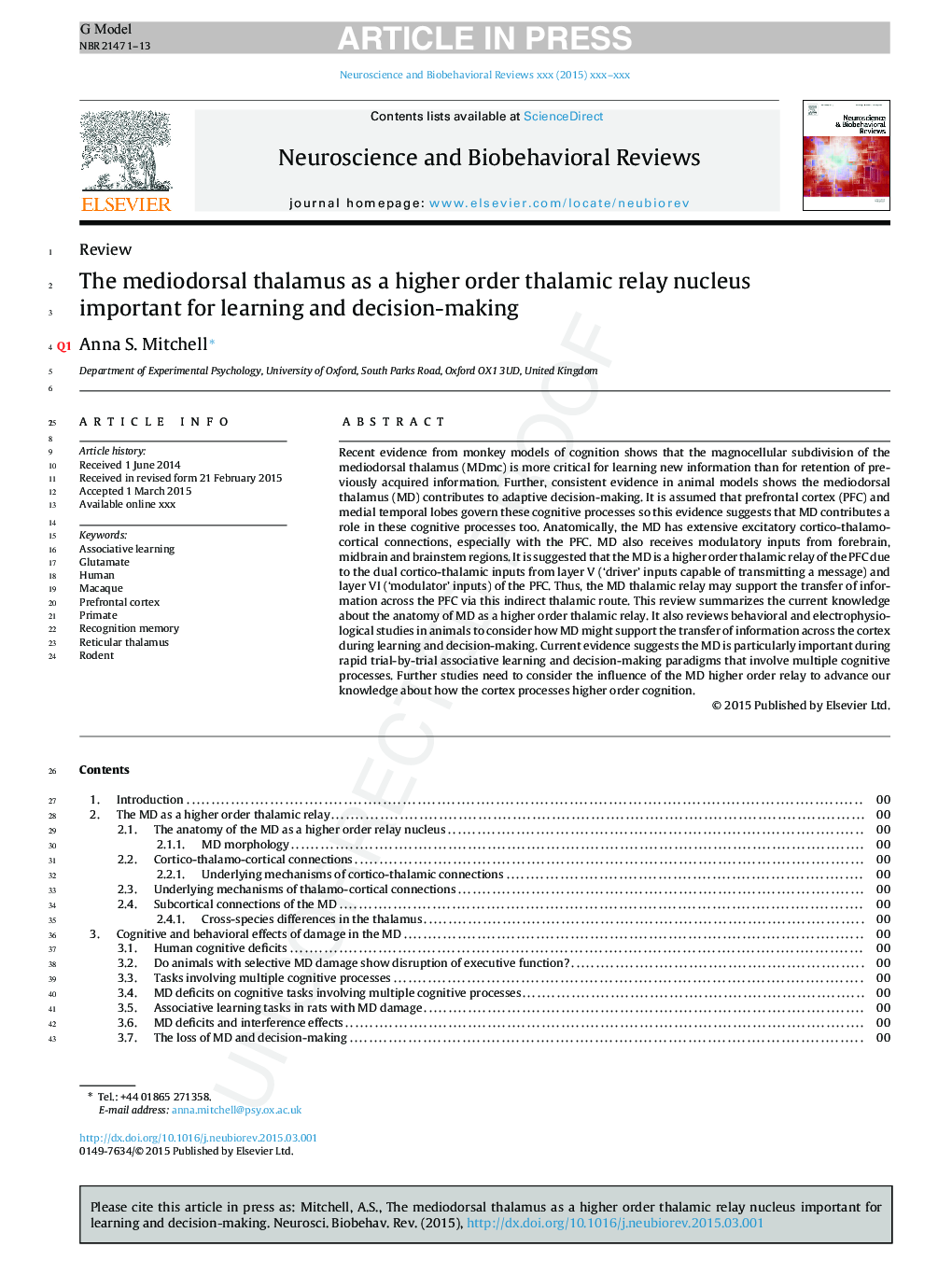| Article ID | Journal | Published Year | Pages | File Type |
|---|---|---|---|---|
| 7303416 | Neuroscience & Biobehavioral Reviews | 2015 | 13 Pages |
Abstract
Recent evidence from monkey models of cognition shows that the magnocellular subdivision of the mediodorsal thalamus (MDmc) is more critical for learning new information than for retention of previously acquired information. Further, consistent evidence in animal models shows the mediodorsal thalamus (MD) contributes to adaptive decision-making. It is assumed that prefrontal cortex (PFC) and medial temporal lobes govern these cognitive processes so this evidence suggests that MD contributes a role in these cognitive processes too. Anatomically, the MD has extensive excitatory cortico-thalamo-cortical connections, especially with the PFC. MD also receives modulatory inputs from forebrain, midbrain and brainstem regions. It is suggested that the MD is a higher order thalamic relay of the PFC due to the dual cortico-thalamic inputs from layer V ('driver' inputs capable of transmitting a message) and layer VI ('modulator' inputs) of the PFC. Thus, the MD thalamic relay may support the transfer of information across the PFC via this indirect thalamic route. This review summarizes the current knowledge about the anatomy of MD as a higher order thalamic relay. It also reviews behavioral and electrophysiological studies in animals to consider how MD might support the transfer of information across the cortex during learning and decision-making. Current evidence suggests the MD is particularly important during rapid trial-by-trial associative learning and decision-making paradigms that involve multiple cognitive processes. Further studies need to consider the influence of the MD higher order relay to advance our knowledge about how the cortex processes higher order cognition.
Related Topics
Life Sciences
Neuroscience
Behavioral Neuroscience
Authors
Anna S. Mitchell,
